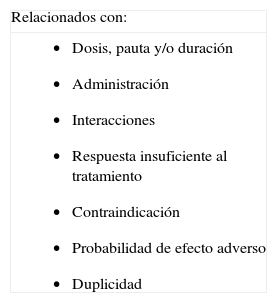Las actividades de atención farmacéutica son un recurso para aumentar el grado de control de pacientes con enfermedades crónicas. El objetivo de este estudio es evaluar la eficacia de una intervención del farmacéutico comunitario a hipertensos tratados con mal control de su presión arterial (PA).
Material y métodosEstudio experimental, longitudinal, prospectivo, randomizado y sin enmascaramiento, realizado en 102 farmacias comunitarias. Cuatrocientos sesenta y un pacientes con hipertensión arterial no controlada fueron asignados paritariamente a un grupo intervención (GI), al que se aplicó un protocolo de seguimiento validado, y a un grupo control (GC). Se evaluó el porcentaje de pacientes controlados, el grado de cumplimiento, el descenso medio de las cifras de PA y el número de problemas relacionados con el medicamento (PRM) detectados y corregidos.
ResultadosAjustando por edad, género y nivel de estudios, el grado de control a los tres meses de seguimiento fue de un 27% en el GC y de un 37,2% en el GI (intervalo de confianza [IC] del 95%: 7,0–13,0; p=0,03). A los seis meses ascendió hasta un 38,3% en el GC y a un 55,2% en el GI (p=0,001).
Los valores de la PA sistólica (PAS) a los 3 y a los 6 meses experimentaron un descenso medio de 11,0mmHg en el GC y de 16,08mmHg en el GI (IC del 95%: 1,13–9,02; p=0,012), y de 14,7mmHg en el GC y de 20,95mmHg en el GI (IC del 95%: 2,12–10,02; p=0,003).
La disminución de la PA diastólica (PAD) a los 3 y a los 6 meses fue de 4,76mmHg en el GC y de 8,40mmHg en el GI (IC del 95%: 0,57–6,73; p=0,021), y de 4,92mmHg de media en el GC y de 7,48mmHg en el GI (IC del 95%: 0,04–5,07; p=0,046).
Existen diferencias significativas en el porcentaje de cumplidores en el GI entre el inicio del estudio, que era de 69 pacientes (30%), y el final de la intervención, que fue de 141 pacientes (60,8%) (p=0,01), existiendo una débil correlación significativa con el número de visitas (r=0,26), y se detectaron 247 PRM en un 70% de los pacientes, lo que representa una media de 1,93 PRM por paciente.
ConclusionesLa atención farmacéutica en pacientes hipertensos mal controlados se asocia a un aumento del nivel de control y de la adherencia al tratamiento y una mayor detección y corrección de PRM.
Pharmaceutical care activities provide a resource to increase the degree of control in chronic disease patients. This study has aimed to evaluate the efficacy of a community pharmaceutical intervention in treated hypertensive patients with poor control of the blood pressure (BP).
Material and methodsThis was an experimental, longitudinal, prospective, randomized and unmasked study conducted in 102 community pharmacies. A total of 461 patients whose high blood pressure was not controlled were equally assigned to an intervention group (IG) in which a validated follow-up protocol was applied and to a control group (CG). The percentage of controlled patients, degree of compliance, mean decrease in blood pressure values and number of drug-related problems (DRP) detected and corrected were evaluated.
ResultsAfter adjusting for age, gender and study level, the degree of control at 3 months of follow-up was 27% in the CG and 37.2% in the IG (95% CI: 7.0–13.0; p=0.03). At 6 months, it reached 38.3% in the CG and 55.2% in the IG GI (p=0.001).
The SBP values at 3 and 6 months experienced a mean decrease of 11.0mm Hg in the CG and of 16.08mmHg in the IG (95% CI: 1.13–9.02mm Hg; p=0.012) and of 14.7mm Hg in the CG and of 20.95mmHg in the IG (95% CI: 2,12–10,02mm Hg; p=0.003) respectively.
Decrease of the DBP at 3 and 6 months was 4.76mm Hg in the CG and 8.40mmHg in the IG (95% CI: 0.57–6,73mm Hg; p=0.021), and a mean of 4.92mm Hg in the CG and 7.48mmHg in the IG (95% CI 0.04–5.07mm Hg; p=0.046), respectively.
There are significant differences in the percentage of compliers in the intervention group between the onset of the study, which was 69 patients (30%) and the end of the intervention when it was 141 patients (60.8%) (p=0.01). There is a weak significant correlation with the number of visits (r=0.26). A total of 247 DRP were detected in 70% of the patients, which represents a mean of 1.93 DRP per patient.
ConclusionsPharmaceutical care in poorly controlled hypertensive patients is associated to an increase in the level of control and treatment adherence and better detection and correction of DRP.
Artículo
Comprando el artículo el PDF del mismo podrá ser descargado
Precio 19,34 €
Comprar ahora













